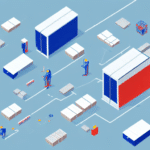How Kitting and Bundling Can Maximize Profits
Kitting and bundling are essential strategies in the business world that involve packaging products in a way that enhances efficiency, reduces costs, and increases profits. This article explores the definitions of kitting and bundling, their benefits, how they save time and money, and best practices for implementing these strategies effectively.
What is Kitting and Bundling?
Before exploring the benefits of kitting and bundling, it’s important to define these terms. Kitting involves grouping individual items together into a single kit that can be sold as one unit. In contrast, bundling refers to packaging multiple products together, often at a discounted price. Both strategies can streamline operations, reduce costs, and boost revenue.
Kitting is commonly used in industries such as electronics, where assembling multiple components into a kit can save time and money on packaging and assembly. Bundling is frequently seen in retail, encouraging customers to purchase multiple items simultaneously by offering them as a package deal.
One significant advantage of kitting and bundling is the potential to increase the average order value. By offering comprehensive packages, businesses can encourage customers to spend more. Additionally, these strategies help in reducing inventory costs by consolidating multiple products into a single kit or bundle.
The Benefits of Kitting and Bundling for Your Business
Kitting and bundling offer numerous benefits, including:
- Increased Sales: Offering comprehensive packages that provide more value can attract a broader audience and drive higher sales volumes.
- Competitive Differentiation: Unique product combinations set your offerings apart from competitors, fostering customer loyalty.
- Enhanced Customer Convenience: Providing pre-packaged kits or bundles simplifies the purchasing decision for customers, enhancing their shopping experience.
According to a study by Forbes, businesses that implement effective bundling strategies see an average sales increase of 20-30%.
How Kitting and Bundling Can Help You Save Time and Money
By grouping items into kits or bundles, businesses can:
- Streamline Inventory Management: Reducing the number of SKUs simplifies tracking and reduces the likelihood of stockouts or overstock.
- Lower Shipping and Handling Costs: Fewer packages mean reduced shipping expenses and easier logistics.
- Decrease Labor Costs: Pre-assembled kits require less time for picking and packing, thereby lowering labor costs.
Moreover, bundling slow-moving inventory with popular items can increase the overall health of your inventory, moving products that might otherwise remain unsold.
According to the Supply Chain Digital, companies utilizing kitting and bundling have reported up to a 15% reduction in packaging costs.
The Impact of Kitting and Bundling on Your Supply Chain
Kitting and bundling can significantly simplify your supply chain by:
- Reducing SKU Variability: Fewer SKUs lead to easier inventory management and forecasting.
- Enhancing Order Fulfillment: Pre-assembled kits speed up the picking and packing process, resulting in faster order processing times.
- Optimizing Shipping Operations: Consolidated packages reduce the number of shipments, lowering overall shipping costs.
Effective kitting and bundling strategies allow businesses to identify frequently ordered product combinations, enabling more accurate procurement planning and inventory management.
How to Implement a Kitting and Bundling Strategy
Implementing a successful kitting and bundling strategy involves several key steps:
- Identify Complementary Products: Select products that naturally go together or are frequently purchased together.
- Develop Packaging Strategies: Design cohesive packaging that clearly communicates the value of the kit or bundle.
- Set Competitive Pricing: Price your kits or bundles attractively to encourage purchases while ensuring profitability.
- Optimize Logistics: Ensure your inventory management and fulfillment processes can handle the new packaging requirements.
- Target Your Audience: Tailor your kits and bundles to meet the specific needs and preferences of your target market.
Regularly evaluate the performance of your kitting and bundling efforts by monitoring sales data and gathering customer feedback to make necessary adjustments.
Best Practices for Successful Kitting and Bundling
To maximize the effectiveness of your kitting and bundling strategy, consider the following best practices:
- Ensure Product Compatibility: Include products that complement each other and provide clear value to the customer.
- Transparent Pricing: Clearly communicate the savings and benefits of purchasing a kit or bundle.
- Seasonal Promotions: Offer bundles during peak seasons or holidays to boost sales.
- Regular Updates: Refresh your product bundles regularly to keep offerings relevant and appealing.
- Effective Promotion: Use various marketing channels such as social media, email campaigns, and in-store displays to promote your kits and bundles.
By following these best practices, businesses can enhance customer satisfaction and loyalty while driving sales growth.
Overcoming Common Challenges When Implementing Kitting and Bundling
While kitting and bundling offer numerous benefits, businesses may encounter several challenges:
- Inventory Management: Ensuring sufficient stock of each component product to assemble kits or bundles can be difficult.
- Sales Cannibalization: Bundling may reduce individual product sales, so it’s crucial to monitor and adjust strategies accordingly.
- Pricing Strategies: Determining the right pricing to ensure profitability while offering perceived value requires careful analysis.
- Packaging Costs: The cost of packaging materials for kits or bundles can impact overall profitability.
By carefully analyzing costs, monitoring sales data, and adjusting strategies as needed, businesses can successfully overcome these challenges and fully leverage the benefits of kitting and bundling.
Case Studies: Real-Life Examples of Companies that Have Successfully Implemented Kitting and Bundling Strategies
Examining real-life examples can provide valuable insights into effective kitting and bundling strategies:
- Amazon's "Frequently Bought Together": This feature recommends products that are often purchased together, enhancing the customer shopping experience and increasing sales.
- HelloFresh: As a meal kit delivery service, HelloFresh offers pre-portioned ingredients and recipes, providing convenience and reducing meal planning time for customers.
- Apple's Apple One Bundle: This bundle includes Apple Music, Apple TV+, Apple Arcade, and iCloud storage, offering comprehensive services that encourage users to engage more deeply with Apple’s ecosystem.
These examples demonstrate how effective kitting and bundling can drive customer satisfaction and business growth.
Future Trends in Kitting and Bundling: What to Expect in the Coming Years
As technology and consumer preferences evolve, several trends are emerging in kitting and bundling:
- Customization: Increasing demand for personalized bundles tailored to individual customer preferences.
- Sustainability: Focus on eco-friendly packaging materials and reducing packaging waste.
- Integration with Technology: Use of advanced software for inventory management, packaging design, and data analytics to optimize bundling strategies.
- Subscription-Based Bundles: Growing popularity of subscription services that offer regular deliveries of curated product bundles.
Staying ahead of these trends will help businesses continuously refine their kitting and bundling strategies to meet evolving market demands.
Key Performance Indicators (KPIs) for Measuring the Success of Your Kitting and Bundling Strategy
To evaluate the effectiveness of your kitting and bundling efforts, track the following KPIs:
- Sales Volume: Number of kits or bundles sold.
- Revenue Generated: Total income from bundled products.
- Average Order Value (AOV): Increase in AOV due to bundled offerings.
- Inventory Turnover: Rate at which inventory is sold and replaced.
- Customer Satisfaction: Feedback and reviews related to bundled products.
Monitoring these KPIs helps in assessing the impact of your strategies and making informed adjustments to enhance performance.
The Pros and Cons of Outsourcing Your Kitting and Bundling Needs
As businesses grow, outsourcing kitting and bundling can be a viable option. Here are the pros and cons:
- Pros:
- Cost Savings: Reduces expenses related to packaging and fulfillment operations.
- Scalability: Easily adjust operations based on demand without significant capital investment.
- Expertise: Access to specialized knowledge and advanced technologies.
- Cons:
- Quality Control: Potential risk of decreased control over packaging quality.
- Dependency: Reliance on third-party providers can impact operational flexibility.
- Communication: Challenges in coordinating with external partners can lead to inefficiencies.
Before deciding to outsource, businesses should carefully evaluate these factors to determine if it aligns with their strategic goals.
The Role of Technology in Enhancing Your Kitting and Bundling Processes
Technology plays a crucial role in optimizing kitting and bundling processes:
- Inventory Management Software: Tracks component levels and manages supply chains efficiently.
- Packaging Design Tools: Allows for the creation of customized and cohesive packaging solutions.
- Data Analytics: Analyzes sales data to identify popular product combinations and optimize bundling strategies.
- Automation: Streamlines the assembly and packaging process, reducing labor costs and increasing accuracy.
Leveraging these technologies can significantly enhance the efficiency and effectiveness of your kitting and bundling operations.
How to Choose the Right Packaging Materials for Your Kitting and Bundling Needs
Selecting appropriate packaging materials is vital for the success of your kitting and bundling strategy. Consider the following factors:
- Durability: Ensure materials provide adequate protection for the products during shipping and handling.
- Cost: Balance the cost of materials with the budget constraints and desired profit margins.
- Aesthetics: Choose materials that enhance the visual appeal of the kit or bundle, aligning with your brand image.
- Environmental Impact: Opt for sustainable materials to reduce environmental footprint and appeal to eco-conscious consumers.
Choosing the right materials not only protects your products but also contributes to a positive customer experience.
Tips for Marketing Your Kitted or Bundled Products to Increase Sales
Effective marketing is essential to drive sales of your kitted or bundled products. Here are some tips:
- Highlight Value: Clearly communicate the cost savings and added benefits of purchasing a bundle or kit.
- Use Multiple Channels: Promote through social media, email marketing, your website, and in-store displays to reach a wider audience.
- Leverage Visuals: Use high-quality images and videos to showcase the bundled products and their uses.
- Customer Testimonials: Share reviews and testimonials that highlight the positive experiences of customers with your bundles.
- Limited-Time Offers: Create urgency by offering bundles as limited-time deals or exclusive offers.
By implementing these marketing strategies, businesses can effectively promote their kitted and bundled products, driving higher sales and customer engagement.
In conclusion, kitting and bundling are powerful strategies that can help businesses enhance efficiency, reduce costs, and increase revenue. By understanding the benefits, implementing best practices, and leveraging technology, your business can successfully adopt kitting and bundling strategies to achieve sustained growth and customer satisfaction.




















